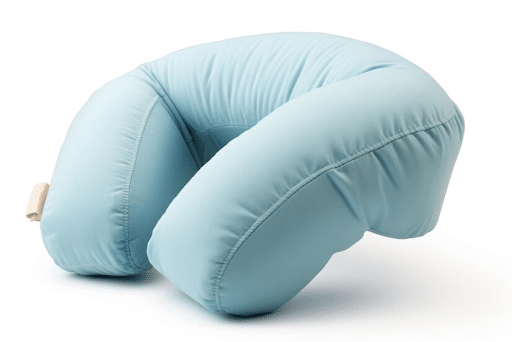Seam Strength vs. Garment Weight: Finding the Sweet Spot with Corespun Technology
Clothes must be comfy, but must stay together, too.
If fabric is light like a feather yet seems weak, the shirt rips on the first hug.
If the thread is super thick, the tee feels stiff and heavy, and the cost goes high.
So we hunt for balance—strong enough seams, light enough feel.
One smart helper here is the polyester corespun thread (a recycled sewing thread).
1. What is corespun, real quick
Picture a candy cane.
Inside is a hard stick (the core), outside is a soft sugar twist (the cover).
Corespun thread works the same.
The core is often tough filament, like polyester or nylon.
Cover wraps around with cotton, modal, or other fiber that loves dye and feels soft.
Together, they make one rope that hides muscle inside kindness.
2. Why weight fights strength
Thread thicker → more grams in seam → garment weight up.
Thread thinner → fewer grams → but the seam may snap.
Brand wants sweet spot: light like summer breeze, tough like playground rope.
Corespun lets you pick a small size thread yet keeps big power, because the inner core takes the load while the wrap keeps looking.
3. Numbers in easy words
Take size Tex 24 corespun poly/cotton.
It breaks around 1,200 cN pull force.
Normal spun cotton, same size breaks at maybe 700 cN.
So, for the same seam strength, you can drop the thread size to Tex 18 corespun, shave weight, the seam still passes the test.
Lose grams, keep smiles.
4. How the sweet spot feels on the body
Heavy thread can dig a ridge on the back shoulder seam, kid says, “Itchy!”.
Corespun of smaller count lies flat, soft cover hugs skin.
Athletic top needs to move—light seam stretches easily, no pucker.
Yet when the player grabs the jersey, the core holds, no tear.
Comfort + durability = win‑win.
5. Pick the right core/wrap combo
| Core | Wrap | Best for | Reason |
| Polyester | Cotton | Jeans & tees | High strength, natural look |
| Polyester | Modal | Yoga wear | Soft hand, strong inside |
| Nylon | Recycled PET | Outdoor gear | Extra flex, eco story |
| Meta‑aramid | Cotton | Flame gear | Heat safe & skin cool |
Choose a pair that fits the fabric weight and hazard.
6. Stitch type matters too
Sentence long: a flatlock seam with Tex 18 corespun may need 4‑thread cover stitch, spreading load wide so thinner yarn still beats 8 kg burst test—makes a light shirt for runners.
Short line: bar‑tack pockets with Tex 40, not Tex 18.
Use a bigger thread only where the stress is high.
Sweet spot is a mix, not one size.
7. Sewing room tweak tips
- Lower tension 5 %—core is slick, can cut fabric if pulled too hard.
- Use ball‑point needle; sharp tip may slice through wrap fiber.
- Clean lint; cotton wrap sheds tiny fuzz.
- Set stitch per inch 10–12 for knits, 8–10 for wovens.
Seam will look neat, weight trimmed.
8. Lab strength vs. life strength
Machines pull seams straight. Real life bends, washes, and sun cooks.
Corespun keeps muscle after 50 cycles ’cause filament core resists stretch fatigue.
Cotton wrap swells a bit in wash, tighter lock on needle hole—nice bonus.
Lightweight weight still safe for long months.
9. Money talk, big picture
Corespun costs a few cents more per cone than spun cotton.
But you save on grams, shipping lighter boxes.
Fewer breaks on line, fewer breaks on the line.
Return rate is lower.
Total cost often drops even with a higher thread price.
10. Simple roadmap to find your sweet spot
- List the fabric GSM for each style.
- Set target seam break (e.g., 8 kg side seam, 12 kg crotch).
- Test three thread sizes: one smaller, one mid, and one big.
- Weigh the whole garment for each sample.
- Pick a combo that meets the break + gives the lowest weight.
- Lock spec, train factory, done.
A child can follow a path, grown-ups can scale.
11. ECO spin—one more smile
Many corespun lines now use recycled PET core and organic cotton wrap.
So weight down, strength up, planet sigh oxygen.
Hangtag may read: “Strong inside, soft outside, 65 % recycled”.
The marketing team claps.
12. Common oops & quick fix
| Oops | Why | Fix |
| Seam tunnel | Tension too high | Drop top thread dial |
| Colour mismatch | Wrap dyes slower | Add 3 % depth to the recipe |
| Needle break | Core too tough | Shift from 70 to 80 DPX5 |
Short table, big help.
Wrap‑up
Balancing seam strength and garment weight is like a tightrope walk.
Go heavy, buyer complains “bulky.”
Go light, seam pop.
Corespun technology hands you a long stick for balance—mighty filament core carries load, cuddly wrap keeps touch gentle.
You trim grams, pass the pull test, ship lighter boxes, and earn green points.
Find the sweet spot, sew it, sell it, and let clothes move with people, not against them.







